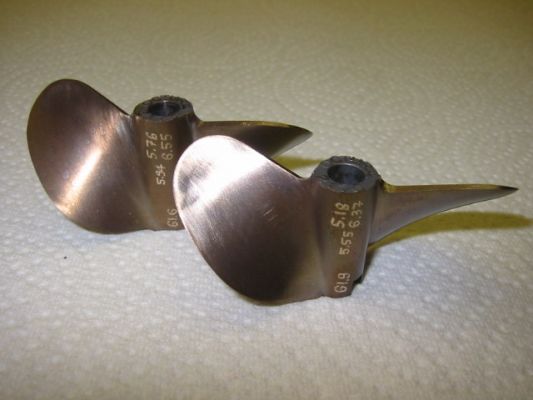Rick rather than get all wound up trying to find the specific , all encompassing meaning of this word as to it's application here ,I think that for the discussion and description of the basic meaningful pitch in the part of the prop blade that does the "most work " , to my understanding "Cup " is the term used to describe this condition . Mostly all of the awesome 1667's that i have came from Andy Browns shop and measured almost right on using my pitch gauges both Woods and Hughey in the manner described .
After hammering the props for several races sometimes they need a little tweak to the original condition ..and this is very easily done because the difference between 5.6 and 5.8 " at roughly 70 % blade is VERY minor in terms of effort . I am not a prop technician but have learned a little along the way . The CMDI 1667's and the Sholund 1667's are beautiful and very well crafted ..and fast !
Tom:
In my previous posts concerning "Cup", this is only a means to make a bad prop "ok" and does increase speed. By this, I mean that true prop pitch (full blade) is the number you have to use times the RPM of the motor (including slippage if known or calculated) to dertimine MPH. I always start with zero cup. This way I know how much torque (ie. pitch) I can pull. You would be surprised how much full blade pitch these new motors really pull. I use cup to make the roostertail lay down.
"Rick rather than get all wound up trying to find the specific "
I deal in specifics. This is what makes our boats perform and I do not mind sharing this information. Some of the manufactureres of the props we use have shared their collective information with me just because I asked them. They are wonderful people that have forgotten more about props than I will ever know in my life. Therefore, it is what it is.
Regards.........Rick












































